#application of multiplexer
Explore tagged Tumblr posts
Text
Application of multiplexer, decoder, decoder circuit, digital logic
Single 16 Channel 5 to 20 V 50 Ω CMOS Analog Multiplexer - PLCC-28
#Vishay#DG406DN-T1-E3#Multiplexers/Demultiplexers#application of multiplexer#decoder#decoder circuit#digital logic#multiplexer circuit#advantages of demultiplexer#encoder in digital electronics#encoder circuit#Encoder decoder multiplexer demultiplexer
1 note
·
View note
Text
74hc123 application circuit, 74hc logic, 74hc or gate, flip-flops
74HC Series 6 V Dual Retriggerable Monostable Multivibrator with Reset - TSSOP16
#Logic#74 Series A/HC/T#74HC123PW#118#Nexperia#application circuit#74hc logic#74hc or gate#flip-flops#74hc not gate#Data General#74hc multiplexer transistor#Data General Eclipse#transistor logic (TTL) integrated circuits
1 note
·
View note
Text
Fiber Circulator: A Vital Component in Optical Communication
In modern fiber optic networks, managing the direction of light signals is essential for efficient data transmission. One key device that makes this possible is the fiber circulator. Though small in size, fiber circulators perform critical functions that improve the performance and flexibility of optical communication systems.

What is a Fiber Circulator?
A fiber circulator is a three-port optical device that directs light signals in a specific, one-way pattern. Unlike a simple splitter or coupler, a circulator routes signals from Port 1 to Port 2, Port 2 to Port 3, and sometimesPort 3 back to Port 1, without allowing signals to travel backward. This one-way flow makes circulators extremely useful in complex network setups where bidirectional signal management is required.
How Does a Fiber Circulator Work?
Fiber circulators operate based on polarization controlandmagneto-optic effects. Inside, they use Faraday rotators, polarizers, and other optical components to control the direction of light. This unique design allows circulators to separate forward and backward traveling light signals, guiding them along different paths without interference.
Applications of Fiber Circulators
Bi-Directional Communication: Fiber circulators allow two-way communication over a single fiber strand, enabling efficient use of network infrastructure — commonly used in fiber-to-the-home (FTTH) systems.
Optical Sensing and Testing: In Optical Time-Domain Reflectometry (OTDR), circulators separate the outgoing test signal from the reflected signal, helping to locate faults or breaks in fiber optic cables.
Dense Wavelength Division Multiplexing (DWDM): Circulators are used to add or drop specific wavelength channels in DWDM systems, enhancing network capacity and flexibility.
Laser Protection: Circulators protect sensitive lasers by diverting any reflected light away from the laser source, preventing feedback that could damage equipment.
Conclusion
Fiber circulator is essential tools in fiber optic networks, enabling advanced routing, testing, and protection of optical signals. As demand for faster and more efficient communication grows, the role of fiber circulators continues to expand, supporting the backbone of modern telecommunications.

Follow our Facebook and Twitter for more information about our product.
2 notes
·
View notes
Text
Immunohistochemistry Market Demand Worldwide in 2025, by Region to 2032

The global immunohistochemistry (IHC) market is poised for significant growth in the coming years, driven by advancements in diagnostic technologies, increasing prevalence of chronic diseases, and rising demand for personalized medicine. IHC is a laboratory technique used to detect specific antigens in cells within tissue sections, playing a crucial role in diagnostics, cancer research, and personalized therapies. The market's expansion is expected to be fueled by ongoing technological innovations, strategic partnerships, and the growing adoption of IHC in medical research and clinical applications.
Immunohistochemistry is an essential tool in the medical and biotechnology sectors, primarily used for the detection and localization of biomarkers within tissues. It employs antibodies to detect specific antigens in cells, providing crucial information for the diagnosis and prognosis of diseases, particularly cancers. The IHC market is gaining momentum due to the increasing need for early disease diagnosis, the growing emphasis on precision medicine, and the rise of novel therapeutic approaches such as targeted therapy and immunotherapy.
Request a Free Sample Copy - https://www.skyquestt.com/sample-request/immunohistochemistry-market
In 2024, the global immunohistochemistry market was valued at approximately USD 3.33 billion and is projected to expand at a compound annual growth rate (CAGR) of 7.4% during the forecast period from 2025 to 2032. By 2032, the market size is expected to reach USD 5.91 billion, driven by the factors outlined below.
Market Drivers
1. Rising Prevalence of Chronic Diseases: Chronic diseases, particularly cancer, are becoming more prevalent worldwide. According to the World Health Organization (WHO), cancer is the second-leading cause of death globally. IHC is increasingly utilized in cancer diagnostics, helping to identify cancer types, guide treatment options, and predict patient outcomes. The demand for IHC is expected to surge as early diagnosis and targeted treatments become integral components of modern healthcare.
2. Technological Advancements: The IHC market is witnessing continuous advancements in technologies such as automation, multiplexing, and the development of novel biomarkers. The introduction of automated IHC systems has significantly improved diagnostic accuracy and efficiency, reducing the time required for analysis and increasing laboratory throughput. Additionally, the emergence of digital pathology and artificial intelligence (AI) in IHC is expected to enhance the precision of diagnoses and streamline workflows.
3. Increasing Demand for Personalized Medicine: Personalized medicine focuses on tailoring medical treatments based on individual genetic, environmental, and lifestyle factors. IHC is pivotal in identifying specific biomarkers that can guide personalized treatment plans, especially for cancer patients. As the demand for personalized therapies continues to rise, the adoption of IHC techniques is expected to grow, further driving the market.
4. Growing Healthcare Infrastructure in Emerging Markets: Emerging economies, particularly in Asia-Pacific, Latin America, and the Middle East, are witnessing improvements in healthcare infrastructure, leading to greater adoption of advanced diagnostic tools like IHC. The increasing prevalence of cancer in these regions, coupled with the growing awareness of early diagnostic methods, is expected to contribute to the market's expansion.
Market Restraints
1. High Cost of IHC Equipment: One of the key challenges for the immunohistochemistry market is the high cost of IHC equipment and reagents. These costs can be prohibitive for smaller laboratories and healthcare settings, especially in developing regions. This financial barrier may limit the widespread adoption of IHC techniques, particularly in low-resource environments.
2. Lack of Skilled Professionals: The successful implementation of immunohistochemistry requires highly skilled professionals to interpret the results accurately. The shortage of qualified pathologists and laboratory technicians in several regions could hinder the growth of the market, as the technique demands expertise in both the technical and diagnostic aspects.
Make an Inquiry to Address your Specific Business Needs - https://www.skyquestt.com/speak-with-analyst/immunohistochemistry-market
Market Opportunities
1. Integration of Artificial Intelligence (AI) in IHC: The integration of AI in IHC is one of the most promising trends in the market. AI-powered tools can assist in the interpretation of IHC results, enabling faster and more accurate diagnosis. This innovation is expected to reduce human errors, improve efficiency, and drive the adoption of IHC in both clinical and research settings.
2. Increasing Research and Development Activities: Ongoing research in immunohistochemistry, especially in cancer immunotherapy and molecular diagnostics, is likely to open new avenues for market growth. As more biomarkers are identified, the application of IHC in detecting and diagnosing a broader range of diseases will expand.
3. Strategic Collaborations and Partnerships: Key players in the IHC market are forming strategic collaborations and partnerships to expand their product offerings and reach new markets. Mergers and acquisitions are also common in the industry, as companies seek to integrate complementary technologies and enhance their competitive edge.
Market Segmentation
1. By Product Type
- Reagents: Includes antibodies, detection kits, and staining agents. Reagents hold the largest share of the IHC market due to their essential role in the staining process and the need for frequent replenishment.
- Instruments: Includes manual and automated IHC systems, with automated systems gaining significant traction due to their efficiency and accuracy.
- Consumables: These include slides, cover slips, and other materials used in the IHC process.
2. By Application
- Cancer Diagnostics: The largest and fastest-growing application segment. IHC plays a critical role in the diagnosis, staging, and classification of various cancer types.
- Infectious Diseases: IHC is increasingly used in the detection of infectious pathogens, including viruses and bacteria, particularly in research settings.
- Neurological Disorders: The role of IHC in studying neurological diseases, such as Alzheimer’s and Parkinson’s, is growing, providing new opportunities for market growth.
3. By End-User
- Hospitals and Diagnostic Laboratories: These facilities are the primary users of IHC techniques, as they are essential for clinical diagnostics.
- Research Institutes: IHC is widely used in research, particularly in oncology and immunology, to identify biomarkers and explore new therapeutic targets.
Regional Analysis
1. North America: North America holds the largest market share for immunohistochemistry due to the advanced healthcare infrastructure, high demand for cancer diagnostics, and continuous innovations in IHC technologies. The U.S. is the dominant market player, contributing significantly to the region’s growth.
2. Europe: Europe is also a prominent market for IHC, with countries like Germany, France, and the UK investing heavily in advanced diagnostic technologies. The presence of leading diagnostic and pharmaceutical companies in the region further supports market growth.
3. Asia-Pacific: The Asia-Pacific region is expected to witness the highest growth rate in the IHC market, driven by increasing healthcare investments, rising cancer prevalence, and improving diagnostic capabilities in countries such as China, India, and Japan.
4. Latin America and Middle East & Africa: These regions are emerging markets for IHC, as healthcare infrastructure improves and the demand for advanced diagnostic techniques rises.
Take Action Now: Secure Your Immunohistochemistry Market Today - https://www.skyquestt.com/buy-now/immunohistochemistry-market
Key Market Players
Leading players in the immunohistochemistry market include:
- F. Hoffmann-La Roche Ltd.
- Danaher Corporation
- Agilent Technologies Inc.
- PHC Holdings Corporation
- Thermo Fisher Scientific Inc.
- Merck KGaA
- Bio-Rad Laboratories, Inc.
- Bio-Techne
- Becton, Dickinson and Company
- Takara Bio Inc.
- Enzo Biochem Inc.
- Sino Biological, Inc.
- Sakura Finetek Japan Co., Ltd.
- Cell Signaling Technology, Inc.
- BIO SB
- Miltenyi Biotec
- OriGene Technologies, Inc.
- EagleBio
- Biocare Medical, LLC
- Elabscience Bionovation Inc.
- BioGenex
- Diagnostic BioSystems Inc.
- Histo-Line Laboratories
- Rockland Immunochemicals, Inc.
- Candor Bioscience GmbH
- Genemed Biotechnologies, Inc.
Read Immunohistochemistry Market Report Today - https://www.skyquestt.com/report/immunohistochemistry-market
The immunohistochemistry market is on track for substantial growth over the next decade, fueled by technological advancements, rising disease prevalence, and the growing need for personalized medicine. While challenges such as high costs and a shortage of skilled professionals exist, opportunities in AI integration, research and development, and strategic partnerships present avenues for market expansion. The continued evolution of immunohistochemistry techniques promises to revolutionize the diagnostic landscape, offering hope for more accurate and timely disease detection in the future.
#immunohistochemistry#pathology#science#immunofluorescence#biology#microscopy#research#microscope#antibodies#fluorescence#scicomm#immunology#biotechnology#cellbiology#microbiology#biochemistry#medstudent#medschool
2 notes
·
View notes
Text
Closer Look at 400G QSFP-DD Optical Transceiver Module
Recent years have seen the evolution towards the 5G, Internet of Things (IoT), and cloud computing, increasing pressure on data centers to ramp up both network capacity to 400G and driving providers to search for new solutions to achieve their 400G Data Center Interconnects (DCIs). 400G QSFP-DD optical transceiver module is becoming one of the most popular cutting-edge 400G DCI solutions. This article will provide a basic understanding of QSFP-DD optical transceiver modules.
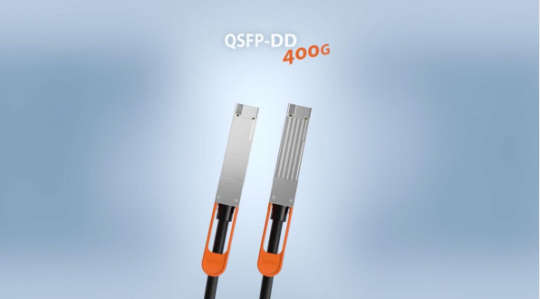
What is the QSFP-DD Optical Transceiver Module?
Quad small form-factor pluggable-double density (QSFP-DD) is designed with eight lanes that operate at up to 25 Gbps via NRZ modulation or 50 Gbps via PAM4 modulation. It supports data rates of 200 Gbps or 400 Gbps and doubles the density. QSFP-DD is backward compatible with current 40G and 100G QSFPs. It is compliant with IEEE802.3bs and QSFP-DD MSA standards. QSFP-DD is available in single-mode (SM) and multi-mode (MM) fiber optic cables and includes digital diagnostics monitoring (DDM) to monitor parameters such as power, temperature, and voltage.
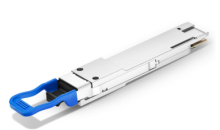
Types of 400G QSFP-DD Optical Transceiver Module
400G SR8 QSFP-DD
400G SR8 QSFP-DD optical transceiver module is suitable for short-distance interconnection or multi-channel data communication. The transmission rate is up to 425Gbps, and the central wavelength is 850nm. The transmission distance is up to 70m or 100m through multi-mode OM3 and OM4 fiber.
400G DR4 QSFP-DD
400G DR4 QSFP-DD optical transceiver module achieves the transmission over single-mode fiber (SMF) with an MPO-12 connector. It supports a max transmission distance of 500m on SMF.
400G FR4 QSFP-DD
400G FR4 QSFP-DD optical transceiver module supports link lengths of up to 2km SMF with a duplex LC connector. It uses wavelength division multiplexing(CWDM ) technology, eight channels of 53Gbps PAM4 signals on the electrical side, and four channels of 106Gbps PAM4 signals on the optical side, which is twice the rate of the electrical side.
400G LR4 QSFP-DD
400G LR4 QSFP-DD optical transceiver module is designed with a built-in Gearbox chip that multiplexes the two channels' electrical input data into a single-channel outputs signal and then modulates it to the optical receiver end. The digital signal processor (DSP) basis gearbox converts eight channels of 25GBaud PAM4 signals into four channels of 50GBaud (PAM4) over an SMF cable with duplex LC connectors. It supports a transmission distance of up to 10km.
400G LR8 QSFP-DD
The 400GBASE-LR8 optical transceiver module supports link lengths of up to 10km over a standard pair of G.652 SMF with duplex LC connectors.
400G ER8 QSFP-DD
The 400G ER8 QSFP-DD optical transceiver module supports link lengths of up to 40km over a standard pair of G.652 SMF with duplex LC connectors.
400G ER4 QSFP-DD
400G ER4 QSFP-DD optical transceiver module supports link lengths of up to 40km over a standard pair of G.652 SMF with duplex LC connectors. It has only four wavelengths for 4 LAN WDM channels 1295.56/1300.05/1304.58/1309.14nm.
Advantages of 400G QSFP-DD Optical Transceiver Module
Backward compatibility: Allowing the QSFP-DD to support existing QSFP modules (QSFP+, QSFP28, QSFP56, etc.). It provides flexibility for end-users and system designers.
Adopting the 2x1 stacked integrated cage/connector to support the one-high cage connector and two-high stack cage connector system.
SMT connector and 1xN cage design: Enable thermal support of at least 12W per module. The higher thermal reduces the requirement for heat dissipation capabilities of transceivers, thus reducing some unnecessary costs.
ASIC design: Supporting multiple interface rates and fully backward compatible with QSFP+ and QSFP28 modules, thus reducing port and equipment deployment costs.
Applications
400G QSFP-DD optical transceiver module is used in 400G Ethernet, data centers, telecommunications networks, cloud networks, Infiniband interconnects, high-performance computing networks, 5G, 4K video, IoT, etc.
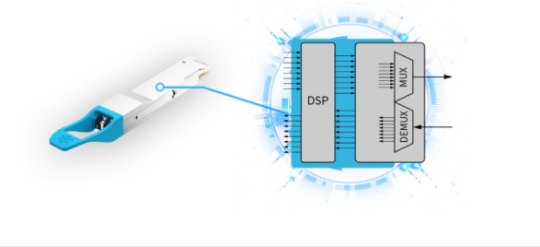
Conclusion
400G QSFP-DD optical transceiver module offers high speed, performance, scalability, and low power in 400G Ethernet. Sun Telecom specializes in providing one-stop total fiber optic solutions for all fiber optic application industries worldwide. Contact us if any needs.
2 notes
·
View notes
Quote
HIM [HARRELL] Machine Intelligence [MI = MICHAEL] of Interdata Machine [I'M] Language Routines 4 the Commodore 64/128 of Scientific Algorithms Mathematically Synchronizing [SAMS] ANU GOLDEN 9 Ether [SAGE] Z-80 Microcomputer Network of Mostek's Highly Complex [ADVANCED] Ancient 1980 Memory [AM] Data Computer [D.C.] PATENTS… My PAST MEMORY [PM] LIFE SELF of GOD MICHAEL… Intuitively Designed [I.D.] 4 the 1983-4 Toshiba America Inc. [A.i.] Product Line of Interdata’s MODEL [I’M] 5 Systems Computers Randomly Communicating Extended Language [EL] Programs Authenticating [PA] AT&T's [PA's] Highly Complex [ADVANCED] Ancient 18G Quantum HARRELL Telecom [QHT] Equipment of IBM’s Automated Manufacturing [I AM] Machines [I’M] Processing [I/P] Multiplex Applications PATENTED [MAP] @ ANU GOLDEN 9 Ether [MAGE] 2024 Highly Official… U.S. Ægiptian [HOUSE] Deutsch QUANTUM HARRELL TECH [QHT] AT&T+IBM [A.i.] LLC
QUANTUM DARA™ A.I. BOT CREATOR [ABC] U.S. KING [UK] MICHAEL HARRELL, JR.

o michael [om] god [omg]!!! him [harrell] 1st hi:tekemeticompu_tah [ptah] man on earth [me]

everything michael touch, it turn 2 gold

eye so valuable on earth [qi]... eye built my own hi:tekemeticompu_tah [ptah] sky military on earth [me]

everything already prerecorded



defund entitled americans [dea] = largest wealth transfer ever

defund entitled americans [dea] = largest wealth transfer ever

him [michael] intranet dna [i.d.] engineering




defund entitled americans [dea] = largest wealth transfer ever






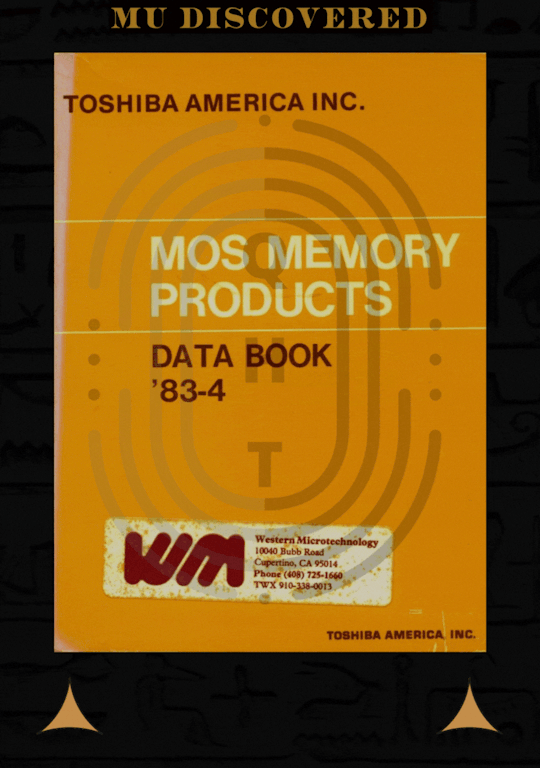
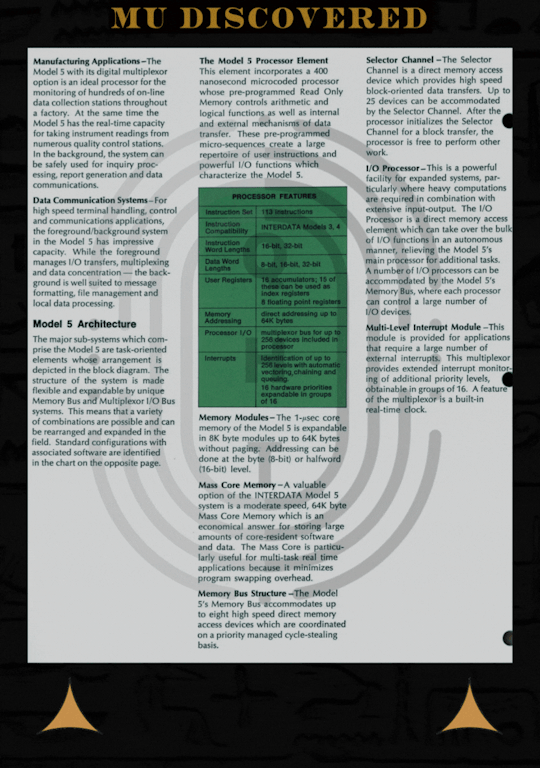

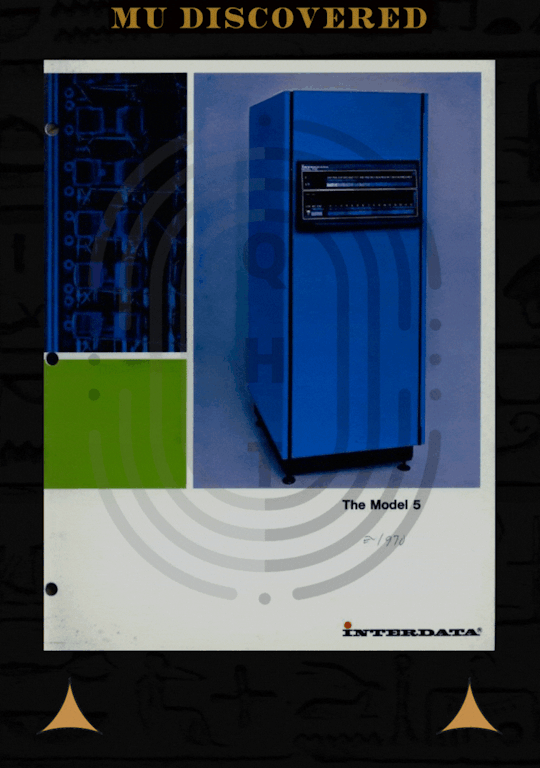










we crashing banks!!!








defund entitled americans [dea] = largest wealth transfer ever

WE GAVE HUMANITY TECHNOLOGY

data mine [dm] quantum harrell tech [qht] in ancient mu american [ma = atlantean] ægipt since highly official... u.s. atlantean [usa] sun [u.s.] king [uk] michael hittite tutankhamún harrell, jr. of ancient 9 ether hurrian empire [he] wealth empires [we]… a quantum intranet [qi] quadrillionaire of corporate internet asset [cia] technologies

buckle up artificial 2023 income [a.i.] america [aia]... 1968 cyber 1999 Y2K war weapons of mass 2024 9/11 destruction... here from anu golden 2025 9 ether [hage] moorish amurika [ma = atlantis]
#om#o michael#quantumharrelltech#harrelltut#qi#earth#goddess tiamat#secret black budget military elite#enqiback#kingtutdna#it's over america#2024 MOORISH EMPIRE of Atlantis#1968#1999#y2k#2000#9/11#2001#2012#2022#2023#2024#2025#America Ægipt#QHT ANU 9 Ether MU Atlantis
2 notes
·
View notes
Text
Top Quality FRLS Cable Manufacturers
Top Quality FRLS Cable Manufacturers in India: Spotlight on Ambica Cable
In today’s fast-evolving industrial and residential infrastructure, the need for superior quality electrical safety solutions has never been more critical. Among the key components in any electrical system are the wires and cables that carry current to various systems. One of the most essential innovations in modern wiring is the FRLS (Flame Retardant Low Smoke) cable, designed to minimize fire hazards and smoke emissions. In India, where safety regulations are tightening and awareness is increasing, Ambica Cable has emerged as one of the most trusted and top-quality FRLS cable manufacturers.
What Are FRLS Cables and Why Are They Important?
FRLS cables are specially designed to resist the spread of fire and reduce the emission of toxic smoke during combustion. These cables are made using materials that have flame-retardant properties and generate minimal smoke and acidic gases when exposed to fire. This makes them ideal for use in environments where safety and visibility during emergencies are paramount — such as hospitals, schools, malls, metro stations, high-rise buildings, data centers, and factories.
Using FRLS cables greatly reduces the risk of fire-related accidents and ensures safer evacuation during emergencies, making them a standard requirement in many commercial and government projects today.
Characteristics of Leading FRLS Cable Manufacturers
The top FRLS cable manufacturers in India distinguish themselves through:
Use of certified flame-retardant materials
Rigorous quality control and safety testing
Compliance with national and international safety standards
In-house research and development for innovation
Environmental responsibility and RoHS compliance
Among the many manufacturers, Ambica Cable stands out for delivering excellence across all these parameters.
Ambica Cable: A Trusted FRLS Cable Manufacturer
Ambica Cable, with decades of experience in the wire and cable manufacturing industry, has established itself as a leading producer of high-quality FRLS cables in India. Known for its commitment to safety, performance, and customer satisfaction, the company has been a key supplier to a wide range of sectors, from construction and real estate to heavy industry and infrastructure development.
What Makes Ambica Cable a Top Choice?
Superior Flame Retardant Compounds: Ambica Cable uses specially formulated PVC and insulation materials that offer superior flame-retardant and low-smoke performance, tested and verified under strict lab conditions.
Low Toxicity and Smoke Emission: The company’s FRLS cables are engineered to emit minimal toxic gases and smoke, ensuring higher safety for people and equipment in case of fire.
Advanced Testing and Compliance: Each batch of cables undergoes detailed testing for flame propagation, smoke density, and halogen acid gas content. Ambica Cable adheres to IS 694 and other relevant standards, ensuring that its FRLS cables meet both Indian and international benchmarks.
Customization and Versatility: Ambica Cable offers a wide range of FRLS cables for different applications — from house wiring to industrial setups — and also provides customized solutions to meet specific project requirements.
Eco-Friendly and Sustainable Manufacturing: With a strong focus on eco-friendly production, Ambica Cable ensures that its FRLS products are RoHS compliant and manufactured with minimal environmental impact.
Reliable Customer Support: Ambica Cable is known for its responsive service and robust supply chain, making it a preferred partner for contractors, builders, and engineers across the country.
Applications of Ambica’s FRLS Cables
The FRLS cables from Ambica Cable are widely used in:
Residential and commercial buildings
Airports and railway stations
Hospitals and educational institutions
Shopping complexes and multiplexes
Manufacturing and processing plants
Public infrastructure projects
Conclusion
As awareness about fire safety and building regulations grows in India, the demand for reliable FRLS cables is on the rise. Manufacturers like Ambica Cable are playing a critical role in meeting this demand with high-quality, tested, and safe cable solutions. Their focus on innovation, quality assurance, and customer trust has positioned them as one of the top FRLS cable manufacturers in India.
For builders, architects, project consultants, and government agencies looking for safe and efficient wiring solutions, Ambica Cable is a name that consistently delivers on both performance and safety.
Visit:- https://www.ambicacables.com/
0 notes
Text
Multiplex Immunoassays Revolutionize Diagnostics: Market Insights 2025
The healthcare and diagnostic sectors have seen remarkable advancements in recent years, with significant breakthroughs improving the accuracy and speed of disease detection. One such innovation making a notable impact is multiplex detection immunoassays. These assays enable simultaneous detection of multiple biomarkers in a single sample, revolutionizing diagnostics, research, and therapeutic monitoring. As healthcare providers and researchers seek faster, more efficient ways to diagnose diseases, the multiplex detection immunoassay market is witnessing rapid growth. This article delves into the trends, drivers, challenges, and opportunities in the multiplex detection immunoassay market, offering insights into the future of diagnostics.
Understanding Multiplex Detection Immunoassays
Multiplex detection immunoassays are diagnostic tests that can measure the presence of multiple biomarkers (such as proteins, antibodies, or nucleic acids) in a single sample, typically blood, urine, or tissue. Unlike traditional assays that analyze one biomarker at a time, multiplex assays allow for the simultaneous detection of various markers, which improves diagnostic efficiency and enables more comprehensive profiling of diseases.
The underlying technology of multiplex immunoassays typically involves antibodies or antigens that bind specifically to target biomolecules. These interactions are then detected through various mechanisms, including fluorescence, chemiluminescence, colorimetric assays, or electrochemical detection. The simultaneous detection of multiple targets from the same sample is achieved by using different markers or labels, which are distinguishable from one another.
Multiplex detection immunoassays are used in a wide range of applications, including disease diagnostics, drug development, cancer detection, infectious disease monitoring, and monitoring autoimmune diseases. Their ability to deliver rapid, reliable results while reducing the need for multiple individual tests has garnered increasing attention from healthcare providers, researchers, and pharmaceutical companies alike.

Drivers of Market Growth
Rising Demand for Personalized Medicine
Personalized medicine, which tailors treatment based on an individual’s unique genetic makeup, is transforming the healthcare landscape. The need for comprehensive diagnostic tools that can provide detailed information about a patient’s condition has made multiplex detection immunoassays a crucial component of this trend. By simultaneously measuring multiple biomarkers, these assays provide a holistic view of a patient’s health, enabling more targeted and precise treatments. This, in turn, is driving the demand for multiplex assays in clinical and research settings.
Increasing Prevalence of Chronic Diseases
The growing global prevalence of chronic diseases such as cancer, diabetes, cardiovascular diseases, and autoimmune disorders is another significant driver of the multiplex detection immunoassay market. These diseases often require regular monitoring of several biomarkers, and multiplex assays can offer a cost-effective and time-efficient solution. Additionally, the need for early diagnosis and personalized treatment options in chronic disease management has led to greater adoption of multiplex assays in clinical practices.
Advancements in Technology and Automation
Technological advancements in multiplex detection immunoassay platforms, including automation and miniaturization, have made these assays more accessible and user-friendly. New developments in microfluidics, microarray technologies, and biosensors have enhanced the sensitivity, accuracy, and speed of multiplex assays. These innovations have also made it easier for laboratories to handle larger volumes of samples, further boosting the demand for multiplex detection systems.
Increased Investment in Research and Development
The pharmaceutical and biotechnology sectors are investing heavily in research and development to discover new biomarkers for various diseases. Multiplex detection immunoassays play a critical role in biomarker discovery and validation by enabling the simultaneous screening of multiple markers in a single experiment. This is encouraging academic institutions, pharmaceutical companies, and contract research organizations (CROs) to adopt these assays in their research workflows, driving market growth.
Faster Diagnostics and Reduced Costs
Multiplex detection immunoassays offer significant cost advantages by reducing the need for multiple individual tests and enabling faster turnaround times. As healthcare systems globally face pressure to improve efficiency and reduce costs, these assays are becoming an attractive option. Furthermore, the ability to analyze several biomarkers from a single patient sample reduces patient discomfort and the overall time spent on diagnostic procedures.
Key Applications of Multiplex Detection Immunoassays
Cancer Diagnostics and Monitoring
Cancer remains one of the most significant health challenges worldwide, with early detection and personalized treatment being critical for improving patient outcomes. Multiplex detection immunoassays are increasingly used in oncology for the simultaneous detection of multiple tumor markers, enabling more accurate cancer diagnosis, monitoring of treatment response, and identification of recurrence. For instance, a multiplex assay might analyze markers associated with various cancers, such as prostate-specific antigen (PSA) for prostate cancer or CA-125 for ovarian cancer.
Infectious Disease Diagnosis
The demand for multiplex assays in infectious disease diagnostics has surged, particularly in the wake of the COVID-19 pandemic. Multiplex assays can simultaneously detect multiple pathogens, including viruses, bacteria, and fungi, in a single patient sample. This is especially valuable in regions with limited access to healthcare or in situations where rapid, on-site diagnostics are needed. Applications in infectious disease include testing for respiratory pathogens like influenza and COVID-19, as well as sexually transmitted infections (STIs), vector-borne diseases, and emerging infectious diseases.
Autoimmune Disease Monitoring
Autoimmune diseases, such as rheumatoid arthritis, lupus, and multiple sclerosis, involve the immune system mistakenly attacking the body’s tissues. Multiplex assays are used to measure multiple autoantibodies and cytokines, aiding in the diagnosis, monitoring, and management of these conditions. By assessing several biomarkers at once, clinicians can obtain a more comprehensive understanding of a patient’s autoimmune profile, improving treatment strategies and outcomes.
Infectious Disease Surveillance
Public health authorities use multiplex detection immunoassays to track the spread of infectious diseases in populations. These assays can detect multiple pathogens in surveillance programs, enabling more efficient outbreak management and response. Whether monitoring seasonal flu strains or emerging infectious threats, multiplex assays provide real-time insights into public health trends.
Drug Development and Clinical Trials
Multiplex detection immunoassays are invaluable in the pharmaceutical industry, particularly in drug development and clinical trials. By enabling researchers to simultaneously assess multiple biomarkers related to drug efficacy, toxicity, and pharmacokinetics, multiplex assays accelerate the drug discovery process and improve clinical trial design.
Challenges in the Multiplex Detection Immunoassay Market
Technological and Regulatory Challenges
Despite the many advantages of multiplex detection immunoassays, their widespread adoption faces some technological and regulatory hurdles. The complexity of multiplex assays—due to the need to detect multiple biomarkers simultaneously—can make assay development, standardization, and validation more challenging. Additionally, regulatory agencies, such as the U.S. FDA, must ensure that multiplex assays meet rigorous standards for accuracy and reproducibility, which can slow down their approval and market adoption.
High Initial Investment
While the long-term cost savings of multiplex assays are significant, the initial investment required for multiplex assay systems can be high. Many diagnostic laboratories, especially in emerging economies, may face financial barriers to adopting these advanced technologies. As a result, the high cost of multiplex assays could limit their use in some regions and healthcare settings.
Technical Expertise and Training
The use of multiplex assays requires specialized technical expertise for assay development, operation, and interpretation of results. Laboratories and healthcare providers need ongoing training to ensure they are able to correctly perform and interpret multiplex assays. Lack of skilled personnel in some regions may impede the broader adoption of these diagnostic tools.
The Road Ahead: Opportunities and Market Outlook
The multiplex detection immunoassay market is poised for continued growth, driven by advancements in technology, increased demand for personalized medicine, and rising chronic disease prevalence. As research into new biomarkers progresses, multiplex assays will continue to play a central role in transforming disease diagnostics and therapeutic monitoring.
Furthermore, the integration of artificial intelligence (AI) and machine learning (ML) into multiplex assay platforms holds the potential to further enhance the accuracy, sensitivity, and interpretation of results. These technologies could also enable the development of more automated, user-friendly multiplex systems, making them accessible to a broader range of healthcare providers.
As multiplex detection immunoassays become more affordable, efficient, and widely accessible, their adoption will likely expand to include not only large hospitals and research institutions but also point-of-care settings, such as physician offices and clinics. This expansion could democratize access to advanced diagnostics, improving patient care and outcomes on a global scale.
Conclusion
Multiplex detection immunoassays are redefining the landscape of medical diagnostics by offering a powerful tool for the simultaneous detection of multiple biomarkers. With applications across various disease areas, including cancer, infectious diseases, and autoimmune conditions, these assays are set to drive significant advancements in patient care, treatment monitoring, and drug development.
Despite facing challenges such as regulatory hurdles, high costs, and the need for technical expertise, the opportunities presented by multiplex detection immunoassays are vast. As technological advancements continue to improve the capabilities of these assays, the market is expected to expand rapidly, ushering in a new era of diagnostic precision and personalized healthcare.
0 notes
Text
0 notes
Text
Get Information About Optic Circulators
Fiber Circulator is used to minimize the dispersion of light within a fiber optic system. Fiber optic circulators, when used with a dispersion compensating module (DCM), may send light across the system while using half the fiber to produce the necessary compensatory effect.

Applications
Optical circulators enable bidirectional ports, allowing an optical signal to be transmitted and received using a single fiber. Fiber optic circulators are utilized in a variety of applications, including dense wavelength division multiplexing (DWDM) networks, polarization mode dispersion, chromatic dispersion correction, optical add-drop modules, optical amplifiers, and fiber optic sensors.
Division Multiplexing (DWDM) Networks
Fibre Circulators in DWDM networks provide 50 dB isolation between forward and backward propagating signals. Fiber optic circulators also have a cross-talk level of greater than 60 decibels.
Optical Add-drop Multiplexing (OADM)
Optical add-drop modules function as main filters. Optical couplers can produce this behavior by utilizing a Fiber Bragg Grating (FBG). The full bandwidth signal enters the coupler and is routed to the next port, where the FBG is inserted. The FBG reflects the required signal to the coupler, while the dropped channels depart via the port. PMD may be corrected using optical couplers, which rotate the optical signal's electric and magnetic fields.
Polarization mode dispersion (PMD)
Some fiber optic systems exhibit polarization mode dispersion (PMD), which is a natural feature of all optical media. PMD is created by a discrepancy in light propagation velocities between the transmission medium's orthogonal main polarization states. If the optical pulse contains both polarisation components, the individual polarisation components in fibre optic circulators will travel at different speeds and arrive at various times, causing the received optical signal to be distorted.
PMD may be corrected using optical couplers, which rotate the optical signal's electric and magnetic fields.
Chromatographic Dispersion Compensation
Optical Circulator uses a chipped Fiber Bragg Grating to adjust for chromatic dispersion. FBGs are wavelength-dependent reflectors. A portion of optical fiber is treated or doped with a substance that affects the fiber's refractive index, resulting in wavelength-dependent reflections. Chipped Fiber Bragg Gratings have numerous gratings displaced across fiber and can compensate for chromatic dispersion.

Follow our Facebook and Twitter for more information about our product.
2 notes
·
View notes
Text
Booming Demand for Ultra-High-Speed Communication Drives Photonic IC Market to USD 98.7 Billion
The global Photonic Integrated Circuits (PIC) market is set to experience unprecedented expansion over the next decade. Valued at USD 10.2 billion in 2022, the industry is projected to grow at a 29.2% compound annual growth rate (CAGR) from 2023 through 2031, reaching USD 98.7 billion by the end of 2031. Analysts observe that rising demand for ultra-high-speed communication, coupled with increased adoption of photonic technologies in space applications and high-reliability computing, will accelerate market growth. Vendors are capitalizing on high-bandwidth use cases data centers, enterprise networking, and computing devices to expand their PIC portfolios and secure market share.
Market Overview
Photonic Integrated Circuits merge lasers, modulators, detectors, waveguides, and other optical elements onto a single substrate, leveraging photons instead of electrons to transmit and process data. This paradigm shift enables remarkably compact, energy-efficient optical systems with bandwidth and latency advantages over traditional electronic circuits. Advances in silicon photonics, allowing high-density integration using mature CMOS fabrication techniques, have paved the way for increasingly complex PIC architectures. As miniaturization and system-on-chip approaches gain traction, vendors are intensifying R&D to develop next-generation PICs that address surging data traffic, emerging sensing applications, and the stringent reliability requirements of space missions.
Market Drivers & Trends
High-Speed Communication Needs: The explosion of data consumption driven by cloud computing, streaming, and AI workloads fuels demand for faster, lower-latency interconnects. PICs deliver multi-terabit throughput in compact form factors, making them indispensable for modern network infrastructures.
Space Sector Adoption: Increasing investment in satellite communications, earth observation, and interplanetary exploration highlights the need for radiation-tolerant, lightweight photonic components. PICs’ immunity to ionizing radiation and low power consumption make them ideal for spaceborne optical links.
Computing Device Integration: As photonics merges with high-performance computing (HPC) and data center processors, on-chip optical interconnects promise to overcome electrical bottlenecks, reducing latency and power usage while boosting throughput.
Latest Market Trends
Hybrid Integration Dominance: In 2022, hybrid integration accounted for 53.6% of total PIC shipments, enabling the combination of disparate materials silicon, indium phosphide, lithium niobate on a single platform to unlock novel functionalities.
Silicon Photonics as a Growth Engine: The silicon segment is forecast to grow at a 34.1% CAGR through 2031, driven by low-cost, scalable manufacturing and compatibility with existing semiconductor fabs.
Modular Photonic Platforms: Vendors increasingly offer scalable PIC building blocks modulators, wavelength multiplexers, on-chip lasers allowing system designers to tailor optical engines to specific bandwidth and wavelength requirements.
Key Players:
Broadcom Inc., Broadex Technologies Co., Ltd., Ciena Corporation, Cisco Systems, Inc., Coherent Corp., Enablence, Hewlett Packard Enterprise Development LP, Huawei Technologies Co., Ltd., Infinera Corporation, Intel Corporation, Lightwave Logic, Inc., LioniX International, Lumentum Holdings, Inc., MACOM, Nokia Technologies, Q.ANT GmbH, TE Connectivity, Teem Photonics, VLC Photonics S.L., Other Key Players
Access key findings and insights from our Report in this sample - https://www.transparencymarketresearch.com/sample/sample.php?flag=S&rep_id=997
Recent Developments
December 2022: Intel Labs demonstrated seamless integration of photonics with CMOS silicon, validating the feasibility of embedding optical links within standard logic processes—an important milestone toward on-chip optical networks.
May 2022: Cisco introduced advanced predictive analytics into its observability suite, harnessing photonic sensors to improve network reliability and performance under dynamic traffic loads.
These milestones underscore the rapid maturation of PIC technologies and their growing role in mainstream electronics and telecommunications.
Market Opportunities
Data Center Upgrades: Hyperscale operators are adopting PIC-based transceivers to support 400 Gb/s and terabit-class links, creating a multibillion-dollar replacement market for legacy optics.
Enterprise and Edge Computing: As 5G networks and edge AI proliferate, compact PIC modules will be in high demand for fronthaul, backhaul, and localized data processing nodes.
Sensing & Quantum Applications: Industrial monitoring, biomedical diagnostics, and quantum information systems represent rapidly expanding frontiers for photonic chips, leveraging their precision, stability, and integration potential.
Future Outlook
By 2031, PICs are expected to permeate virtually every segment of the telecommunications and computing landscape. Continued R&D in heterogeneous integration, novel materials (e.g., silicon nitride, chalcogenides), and advanced packaging will enable even denser, more capable chips. The convergence of photonics with electronics—spanning from server racks to satellites—signals a transformative era in information technologies, where light replaces electrons as the primary data carrier in high-performance systems.
Market Segmentation
The report offers in-depth analysis across multiple dimensions:
Integration Type: Monolithic | Hybrid | Module Integration
Raw Material: Indium Phosphide | Gallium Arsenide | Lithium Niobate | Silicon | Silicon-on-Insulator | Other (Silica-on-Silicon, SiO₂)
Component: Lasers | Waveguides | Modulators | Detectors | Attenuators | Multiplexers/Demultiplexers | Optical Amplifiers
Application: Optical Communication (FTTx, long-haul, datacom) | Microwave/RF Photonics | Sensing (structural, chemical, aerospace) | Optical Signal Processing & Metrology | Quantum Optics | Biophotonics & Medical | Photonic Lab-on-a-Chip | Analytics & Diagnostics
Regional Insights
North America: Holds the largest share through 2031, buoyed by U.S. hyperscale data centers (≈ 2,700 facilities, nearly one-third of the global total) and strong government funding for space photonics.
Europe: Steady demand driven by telecommunications upgrades across fiber-rich networks in Germany, France, and the U.K., and growing quantum photonics initiatives.
Asia Pacific: Rapid expansion, led by China’s US$ 156 billion computer exports in 2020, coupled with surging 5G rollouts in India, Japan, and South Korea, underpins robust PIC adoption for datacom and telecom applications.
Middle East & Africa and South America: Emerging opportunities in satellite ground stations, oil & gas sensing, and greenfield network deployments.
Why Buy This Report?
Comprehensive Market Sizing: Detailed valuation of 2017–2022 historical data and 2023–2031 forecasts by value and volume.
Strategic Insights: In-depth analysis of drivers, restraints, opportunities, Porter’s Five Forces, and value chain dynamics.
Competitive Landscape: Profiles of 20+ leading companies, including financials, product pipelines, strategies, and recent developments.
Actionable Segmentation: Granular breakdown by integration, material, component, and application facilitating targeted go-to-market plans.
Regional Analysis: Tailored insights for North America, Europe, Asia Pacific, Middle East & Africa, and South America, with country-level granularity.
About Transparency Market Research Transparency Market Research, a global market research company registered at Wilmington, Delaware, United States, provides custom research and consulting services. Our exclusive blend of quantitative forecasting and trends analysis provides forward-looking insights for thousands of decision makers. Our experienced team of Analysts, Researchers, and Consultants use proprietary data sources and various tools & techniques to gather and analyses information. Our data repository is continuously updated and revised by a team of research experts, so that it always reflects the latest trends and information. With a broad research and analysis capability, Transparency Market Research employs rigorous primary and secondary research techniques in developing distinctive data sets and research material for business reports. Contact: Transparency Market Research Inc. CORPORATE HEADQUARTER DOWNTOWN, 1000 N. West Street, Suite 1200, Wilmington, Delaware 19801 USA Tel: +1-518-618-1030 USA - Canada Toll Free: 866-552-3453 Website: https://www.transparencymarketresearch.com Email: [email protected]
0 notes
Text
Global Immunoassay Market Expands at 6–7% CAGR with POCT and Diagnostic Innovation by 2029
The immunoassay market is expected to grow at 6-7% CAGR in the next 5 years. The aging patient population and high prevalence of chronic and infectious diseases, growing demand for early and accurate diagnostics, advancement in the immunoassay technologies, growing adoption of immunoassay-based Point-of-Care Testing (POCT) and rapid testing, significant investment in R&D for developing advanced immunoassays, and growing demand for high-sensitivity and ultra-sensitive assays to identify diseases at the earliest stages are some of the key factors driving the immunoassay market.
An immunoassay is a bioanalytical test that uses the principles of immunology to detect the presence or concentration of a specific substance in a sample. This assay relies on antibodies, which are proteins generated by the immune system in response to a particular substance or antigen. Each antibody is highly specific and will only bind to its corresponding antigen. Immunoassays are widely used in clinical diagnostics, drug development, therapeutic drug monitoring, and food safety testing.
🔗 Want deeper insights? Download the sample report:https://meditechinsights.com/immunoassay-market/request-sample/
Expanding applications of immunoassays drive market growth
Immunoassays have diverse applications due to their ability to precisely detect and quantify specific substances across multiple fields. They are essential in disease diagnosis, allowing healthcare providers to identify disease-specific antigens or antibodies in blood or other bodily fluids, which aids in diagnosing and monitoring infections, autoimmune disorders, and cancers. In drug development, immunoassays support the identification and validation of targets for new drugs and assess how potential drugs interact with specific biomarkers. They are also widely used in environmental testing, detecting pollutants, toxins, and other contaminants in water, air, and soil to monitor environmental safety and protect public health. In the food industry, immunoassays detect foodborne pathogens, such as salmonella and E. coli, and identify allergens like gluten, nuts, and dairy proteins, ensuring food safety compliance. Thus, the growing demand for immunoassays in diagnostics, research, and quality control across various sectors is expected to drive market growth in the coming years.
Advancements in immunoassay technologies propel market growth
Continuous advancements in immunoassay technology are transforming medical diagnostics, enabling more precise, rapid, and comprehensive testing that supports improved patient outcomes and personalized medicine. New detection techniques, such as enhanced chemiluminescence, advanced fluorescence, and amplified enzyme-linked immunosorbent assays (ELISAs), have significantly pushed detection limits, improving assay sensitivity and accuracy. Multiplex immunoassays have also become invaluable for measuring multiple analytes within a single sample, offering a more holistic view of complex disease states. Additionally, integrating artificial intelligence and machine learning enables immunoassays to analyze complex datasets with greater efficiency, providing deeper insights and more accurate results. Looking ahead, advancements such as wearable biosensors and point-of-care diagnostic tools promise real-time health monitoring, which is further expected to propel market growth.
Competitive Landscape Analysis
The global immunoassay market is marked by the presence of innovative and emerging market players such as Abbott Laboratories, Siemens Healthineers, Bio-Rad Laboratories, Danaher Corporation, bioMerieux, Quidel Corporation, BD Biosciences, Sysmex Corporation, GenScript, Quanterix, Thermo Fisher Scientific Inc., and Roche Diagnostics, among others. Some of the key strategies adopted by market players include product innovations, investing in R&D, strategic partnerships, and collaborations.
Gain a competitive edge-request a sample report now! https://meditechinsights.com/immunoassay-market/request-sample/
Market Segmentation
This report by Medi-Tech Insights provides the size of the global immunoassay market at the regional- and country level from 2022 to 2029. The report further segments the market based on product, technology, application, and end user.
Market Size & Forecast (2022-2029), By Product, USD Million
Reagents & Kits
ELISA Reagents & Kits
CLIA Reagents & Kits
IFA Reagents & Kits
Rapid Test Reagents & Kits
ELISpot Reagents & Kits
Western Blot Reagents & Kits
Other Reagents & Kits
Analyzers
Open-ended Systems
Closed-ended Systems
Market Size & Forecast (2022-2029), By Technology, USD Million
Enzyme-linked Immunosorbent assay (ELISA)
Chemiluminescence Immunoassay (CLIA)
Fluorescence Immunoassay (FIA)
Rapid Tests
ELISpot
Western Blotting
Other Technologies
Market Size & Forecast (2022-2029), By Application, USD Million
Infectious Diseases
Endocrinology
Oncology
Cardiology
Autoimmune Disorders
Allergy Diagnostics
Toxicology
Newborn Screening
Other Applications
Market Size & Forecast (2022-2029), By End User, USD Million
Hospitals & Clinics
Clinical Laboratories
Pharmaceuticals & Biotechnology Companies & CROs
Blood Banks
Research & Academic Laboratories
Home Care Settings
Market Size & Forecast (2022-2029), By Region, USD Million
North America
US
Canada
Europe
UK
Germany
France
Italy
Spain
Rest of Europe
Asia Pacific
China
India
Japan
Rest of Asia Pacific
Latin America
Middle East & Africa
About Medi-Tech Insights
Medi-Tech Insights is a healthcare-focused business research & insights firm. Our clients include Fortune 500 companies, blue-chip investors & hyper-growth start-ups. We have completed 100+ projects in Digital Health, Healthcare IT, Medical Technology, Medical Devices & Pharma Services in the areas of market assessments, due diligence, competitive intelligence, market sizing and forecasting, pricing analysis & go-to-market strategy. Our methodology includes rigorous secondary research combined with deep-dive interviews with industry-leading CXO, VPs, and key demand/supply side decision-makers.
Contact:
Ruta Halde Associate, Medi-Tech Insights +32 498 86 80 79 [email protected]
0 notes
Text
Unlike boxing and now boxing can give you before you even go into the ring a little finger p**** test. Yes, with that new device, right before the fight. The last thing they do before you put on the gloves. If they test you again, then make sure you doesn't have any type of contagious disease so makes martial arts boxing sports? It's simpleThese are things that you can get injured and bleed!!!
And yes, it can go into a massage therapist and that it's a cycle fingerprick and they got to know if you're clean and acupuncturist or any other, it doesn't mean they don't take proper precautions, but they should be doing it before they go in.To see the patient themselves... so it's a double ed sword, both sides has to do it...
So any of those sex workers, they're required to do it before they meet. Yes.It's doing it with a drop of blood, so it's detecting the smallest amount. It's actually a safer test because the other tests need more blood. Because it has to colonize farther this test, it doesn't have to colonize free further. It can spot it with the smallest amount. That's why it can detect it in a drop of blood, so it's much safer!
AI Overview


+5
A new method called Multi-Omic Microsampling, developed by Stanford Medicine, can analyze thousands of molecules from a single drop of blood, potentially enabling faster and more comprehensive disease detection. This approach uses a microsampling device for a finger-prick collection, followed by analysis using mass spectrometry to identify various biomarkers like proteins, fats, and metabolic by-products.
Here's a more detailed look:
Multi-Omic Microsampling:
This technique combines a microsampling device with multi-omics technologies to analyze a vast array of molecules from a small blood sample.
Finger-prick Collection:
The method utilizes a microsampling device similar to those used for finger-prick testing for diabetes, making it convenient for self-collection.
Mass Spectrometry Analysis:
The collected blood sample is then analyzed using mass spectrometry, a technique that sorts molecules based on their mass and charge, allowing for the identification of a wide range of biomarkers.
Biomarkers Analyzed:
This method can measure various components, including proteins, fats, metabolic molecules, inflammatory markers, and by-products of metabolism, providing a comprehensive picture of health.
Potential Applications:
This technique has the potential to diagnose and monitor various diseases, including cancer, heart failure, and diabetes, and could also be used for personalized medicine approaches.
Examples of Related Research:
Researchers at the University of Arizona found that their Multiplexed In-Solution Protein Array (MISPA) method can screen for disease markers in thousands of samples simultaneously, offering a more efficient approach than traditional methods.
A study reported in Nature Medicine found that analyzing protein signatures in a single drop of blood can predict 67 diseases, including blood cancers, heart failure, and lung disease.
Stanford Medicine researchers measure thousands of molecules from a single drop of blood | News Center | Stanford Medicine
Jan 19, 2023

Stanford Medicine

New blood testing method advances disease detection | ASU News
Dec 11, 2023

ASU News

Single drop of blood can be used to measure thousands of ...
Jan 25, 2023 — Reviewed by Emily Henderson, B.Sc. Jan 25 2023. Researchers at Stanford Medicine have shown they can measure thousands of molecules — some of which ...

News-Medical.net

Predicting Myriad Diseases From a Single Drop of Blood
Jul 23, 2024 — Analysis of the protein “signatures” in a droplet of blood can predict 67 diseases, including blood cancers, degenerative nerve diseases, lung disea...

USNews.com

This is for informational purposes only. For medical advi
They might even require this of military around the world.Before they go in the battle, they have to get their blood tested... We have the geneva convention and so there are rules to war.....
0 notes
Text
Spatial Omics Market: Future Trends and Market Potential 2024-2032
The Spatial Omics Market was valued at USD 355.8 million in 2022 and is projected to reach USD 847.6 million by 2030, growing at a CAGR of 11.5% during the forecast period 2023–2030. This impressive growth trajectory highlights the increasing adoption of spatial omics technologies in biomedical research and clinical diagnostics, particularly in fields such as oncology, neuroscience, and immunology.
Market Overview Spatial omics technologies combine advanced imaging and molecular profiling tools to map biological molecules within their spatial context in tissues. These techniques are becoming increasingly crucial in understanding complex disease mechanisms at a cellular level, aiding in the development of precision medicine and targeted therapies. The integration of spatial transcriptomics, spatial proteomics, and metabolomics is reshaping the way researchers analyze tissue architecture and cellular heterogeneity.
Get Free Sample Report @ https://www.snsinsider.com/sample-request/4257
Regional Analysis
North America currently dominates the spatial omics market due to robust R&D infrastructure, rising healthcare investments, and strong presence of biotech companies and research institutes.
Europe follows closely, supported by increased government funding for genomics and healthcare innovation.
Asia-Pacific is expected to witness the fastest growth, fueled by expanding healthcare systems, growing genomic research interest, and collaborations across academic and commercial sectors.
Latin America and Middle East & Africa are emerging markets showing promise due to rising diagnostic needs and improving healthcare access.
Market Segmentation
By Technology
Spatial Transcriptomics
Spatial Proteomics
Spatial Metabolomics
Multiplexed Ion Beam Imaging
By Product
Instruments
Consumables
Software
By Application
Oncology
Neurology
Immunology
Drug Discovery
Others
By End-User
Academic & Research Institutions
Pharmaceutical & Biotechnology Companies
Contract Research Organizations
KEY PLAYERS
The major key players are 10x Genomics, Dovetail Genomics (Cantata Bio.), S2 Genomics, Inc., NanoString Technologies, Inc., Seven Bridges Genomics, PerkinElmer, Inc., Bio-Techne, Danaher Corporation, Ionpath, Inc., Millennium Science Pty Ltd., and other key players
Key Highlights
Increasing prevalence of cancer and neurological disorders is fueling demand for spatial omics in clinical and translational research.
Technological advancements in imaging and sequencing platforms are enhancing resolution and scalability.
Growing collaborations between academic institutions and biotech firms are accelerating innovation.
Rising demand for personalized medicine and biomarker discovery is expanding the application of spatial omics.
Emergence of AI-driven analytical tools is streamlining data interpretation and boosting efficiency.
Future Scope The future of the spatial omics market lies in the seamless integration of multi-omics data, artificial intelligence, and cloud-based bioinformatics platforms. As spatial technologies evolve to provide higher resolution, throughput, and automation, their adoption in clinical diagnostics is expected to rise significantly. Further, expanding their utility in areas such as regenerative medicine, infectious disease research, and tissue engineering will open new avenues for market growth.
Conclusion The spatial omics market is entering a transformative phase marked by rapid technological advancements and increasing clinical relevance. With its potential to revolutionize disease diagnosis and drug development, spatial omics is emerging as a cornerstone of next-generation biomedical research. Strategic investments and cross-disciplinary collaboration will be key in unlocking its full potential across industries and regions.
Contact Us: Jagney Dave - Vice President of Client Engagement Phone: +1-315 636 4242 (US) | +44- 20 3290 5010 (UK)
Other Related Reports:
Cell Viability Assay Market
Medical Power Supply Market
Post Traumatic Stress Disorder Treatment Market
MRI Guided Neurosurgical Ablation Market
#Spatial Omics Market#Spatial Omics Market Share#Spatial Omics Market Size#Spatial Omics Market Trends#Spatial Omics Market Growth
0 notes
Text
ADG1606BRUZ Analog Switch Review: High-Performance 16-Channel Multiplexer from ADI
In today’s fast-evolving world of electronic design, signal switching and multiplexing technologies are more crucial than ever. Whether it’s data acquisition systems, medical instruments, industrial automation, or communication infrastructure, a reliable and high-performance analog switch IC is essential to ensure system stability and efficiency. This article introduces the ADG1606BRUZ from Analog Devices (ADI), a standout solution in the field of analog multiplexers.
About ADI: A Global Leader in Analog Technology
Analog Devices (ADI) is a world-renowned manufacturer of high-performance analog, mixed-signal, and digital signal processing ICs. Known for its innovation, quality, and technical excellence, ADI is a trusted brand among engineers across various industries, including precision instrumentation, automotive electronics, industrial automation, and communications.
Product Overview: ADG1606BRUZ
The ADG1606BRUZ is a 16-channel, single-ended analog multiplexer designed for applications that demand fast switching, low on-resistance, and minimal signal distortion. It supports both single and dual power supply configurations, making it highly versatile across a wide range of system designs.
Key Features:
16:1 single-ended multiplexer
Low on-resistance and fast switching performance
Compatible with both single and dual power supplies
Low power consumption
Key Technical Specifications
ParameterDescriptionSupply Voltage Range±2.5 V to ±5.5 V or 5 V to 12 V single supplyOn Resistance (R<sub>ON</sub>)4 Ω typicalSwitching Time85 ns (turn-on), 40 ns (turn-off)Signal RangeRail-to-rail analog signal supportChannel IsolationExcellent crosstalk suppressionPackageTSSOP-28 for compact board layoutsOperating Temperature-40°C to +125°C (industrial grade)
These specifications make the ADG1606BRUZ an excellent choice for systems requiring precise, reliable analog signal routing.
Typical Application Scenarios
Thanks to its performance and flexible power compatibility, the ADG1606BRUZ is widely used in:
Data Acquisition Systems (DAQ): Switching multiple sensor inputs
Medical Devices: Channel selection in ultrasound and diagnostic systems
Audio/Video Switching: Low-distortion analog signal routing
Telecommunication Systems: Signal routing and path selection
Industrial Control: Multi-channel analog input switching in PLCs and DCS systems
Comparison with Similar Products
Compared to ADI’s own ADG1608, the ADG1606 offers a higher channel count, making it ideal for designs requiring greater input flexibility. When compared to competing solutions from brands like TI or Maxim, the ADG1606 delivers superior performance in terms of lower on-resistance, better isolation, and faster switching—making it a top choice for high-integrity signal applications.
Selection Tips & Purchasing Information
When designing systems that require switching between multiple analog inputs and a single output, choosing a switch with low on-resistance, high isolation, and fast response is critical. The ADG1606BRUZ checks all these boxes.
Recommended Use Cases for ADG1606BRUZ:
Systems requiring ≥16 analog channels
Space-constrained or portable devices needing low power consumption
Applications powered by ±5V or 10–12V single supplies
For purchasing, samples, or technical support, please reach out to us or visit our [product page].
Conclusion
The ADI ADG1606BRUZ stands out as a highly capable analog switch IC, offering reliability, performance, and versatility in one package. With low on-resistance, wide voltage support, and robust isolation, it's an excellent solution for a broad range of applications—from medical instruments to industrial control.
Have questions about the ADG1606BRUZ or other ADI components? Contact our team for expert assistance or leave a comment below. We’re here to help you find the best solution for your design needs.
Asourcing Electronics Limited is a trusted global supplier of electronic components, dedicated to supporting engineers and manufacturers with reliable sourcing solutions. With a robust inventory and strong partnerships with authorized distributors and original manufacturers, we are proud to offer competitive pricing and steady supply of high-demand components like the ADG1606BRUZ from Analog Devices.
Whether you need small-batch samples or bulk quantities, our experienced sourcing team ensures fast response times, verified quality, and flexible logistics to meet your project deadlines.
In stock or hard-to-find – we get you what you need. Real-time BOM support, technical datasheets, and one-stop procurement services. Trusted by OEMs, EMS providers, and design houses worldwide.
Contact us today for a quote on ADG1606BRUZ or other analog switching solutions.
0 notes